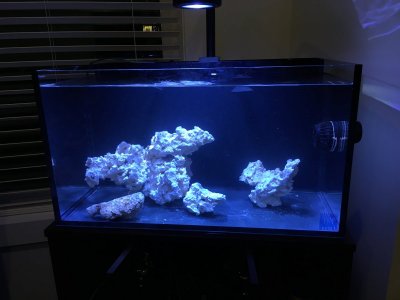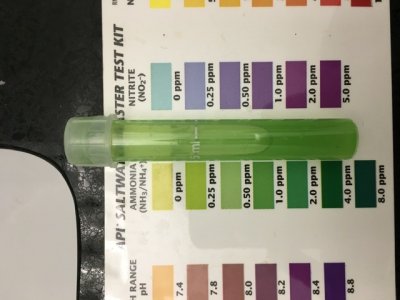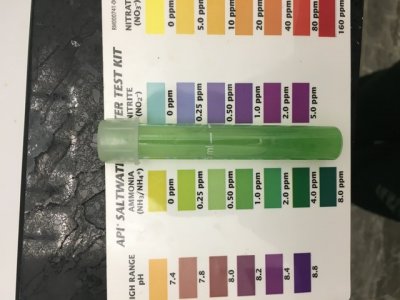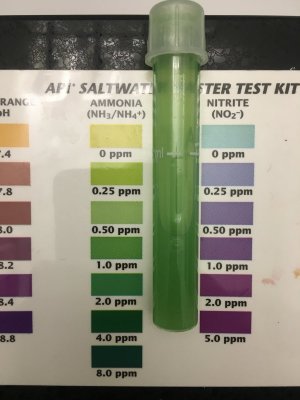I picked it all up in the fish forum here, they're top sticky threads on it
from poster Humblefish, thirty mins read will catch up
Your tank is demonstrating ammonia control but the current method for best fish lifespan is opposite. You'd stock the tank up to a level it's not boring to look at. Corals first, clean up crew, quality feed and water changes everyone can do well at this active stage. Feed and water changes helps commute those detailed live rock growths onto other surfaces, post tank pics if possible
As soon as you are initially stocked, you stop adding any hard items for eighty days. Only feed and water changes. All this is explained in the sticky threads but at day eighty then you add fish, only quarantined and treated ones. You can make any changes you want I'm only forwarding the most up to date info from the fish forum. The fallow transfer method has specific orders of ops, and they earn the most disease free fish I've ever seen compared to any other method
Don't worry about ammonia testing we should work your tank to get it going. Let's see how much live rock is there/ pic
Choose disease protocol and post pics and we can tell by what date you can start from current details and pics.

 www.reef2reef.com
www.reef2reef.com
thats one of many example threads where slightest change up from protocol wipes out fish, its nothing like freshwater where we bring home fish and add them. were it not for these loss threads and humblefish's work I wouldnt even know that difference, my reefs are too small for fish we only keep tiny coral pico reefs.
from poster Humblefish, thirty mins read will catch up
Your tank is demonstrating ammonia control but the current method for best fish lifespan is opposite. You'd stock the tank up to a level it's not boring to look at. Corals first, clean up crew, quality feed and water changes everyone can do well at this active stage. Feed and water changes helps commute those detailed live rock growths onto other surfaces, post tank pics if possible
As soon as you are initially stocked, you stop adding any hard items for eighty days. Only feed and water changes. All this is explained in the sticky threads but at day eighty then you add fish, only quarantined and treated ones. You can make any changes you want I'm only forwarding the most up to date info from the fish forum. The fallow transfer method has specific orders of ops, and they earn the most disease free fish I've ever seen compared to any other method
Don't worry about ammonia testing we should work your tank to get it going. Let's see how much live rock is there/ pic
Choose disease protocol and post pics and we can tell by what date you can start from current details and pics.

Crypto wins the gamble- QT Journal
I am a proponent for having a quarantine system in place for new fish. I proactively QT my fish. I know the risks involved when skirting some of the rules...but ultimately rolled the dice in a few cases while stocking this tank. I lost the gamble. And now my "parasite-free system" has...dun dun...
 www.reef2reef.com
www.reef2reef.com
thats one of many example threads where slightest change up from protocol wipes out fish, its nothing like freshwater where we bring home fish and add them. were it not for these loss threads and humblefish's work I wouldnt even know that difference, my reefs are too small for fish we only keep tiny coral pico reefs.
Last edited:




















